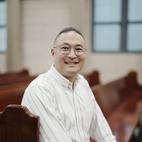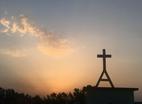In Hangzhou, on the shores of the Xizi Lake, is located a majestic Chinese palace-style church in the Copper Alley at the southeast foot of Wushan Hill. It is the famous Hangzhou Gulou Church.
Hangzhou Gulou Church was originally built in 1885 by the Northern American Presbyterian Mission. In 1931, the church decided to rebuild and the funds were raised by the missionary Kepler Van Evera. He commissioned Li Xiechang, who was in charge of the construction of a factory near the Sushuifang Bridge on Huansha Road, to be responsible for the construction and the establishment of the new church and the Yimin Society (or Benefit People Society), a social service organization affiliated with the church.
Owing to its location near the ancient Drum Tower monument, it is also named "Drum Hall" in Chinese. It has a construction area of 1,535 square meters (0.37 acres) and a total of two floors. On the south side of the church there is a three-story annexed building, which is the place for fellowship activities and ministerial meetings.
Like many churches in the era of Republic of China, the Gulou Church is in localised style, full of traditional Chinese architectural elements. According to the records, its appearance has "flying eaves at the corner of the building, a roof covered with green glass cylindrical tiles, a concrete frame structure, and green brick walls. The four walls have large steel windows." The overall building is magnificent and at the time it was called unique, having heavy eaves to the south of the city and a building with Chinese characteristics. The ceiling of the church is a royal paint pattern. On the two sides of the podium is a couplet with each column reads "Thank the Lord who gives the water of life" and "the singing praises echo over the Zhejiang tide". It is said that the author of the couplet was Feng Yuxiang's general and a famous church figure, General Zhang Zhijiang.
The first Chinese pastor of the Gulou Church was Ye Yunlong, who, under his pastoral ministry, developed the church well. However, the good times did not last long. A few years later the Anti-Japanese War broke out. The church and the Yimin Society were occupied by the Japanese army. After the victory of the Anti-Japanese War, the Gulou Church was restored with Geng Zihua as its pastor. Its membership gradually grew. Gulou Church set up a sermon venue at the Wangjiang Gate of Zhongshan South Road. In the 1950s, the sermon venue was closed down and the houses of the Yimin Society were replaced with the upper city health department. In 1958, the National Church began to worship together and some smaller churches nearby merged into Hangzhou Christian Gulou Church, making it one of the largest in Hangzhou. After the outbreak of the Cultural Revolution, the church stopped worshipping and the building was used as a warehouse by the Yongxin Grocery Store.
In 1979, the Chinese Church ushered in new life with some coastal churches gradually reopening, and the Hangzhou churches were part of this. On September 23, the first service of Hangzhou Gulou Christian Church was held, being the first church in Hangzhou to resume its services. After the resumption of services, not only has the number of believers increased and the ministry improved but the church has also played a role in friendly exchanges with foreign countries. According to the history records of the church: "On November 18, 1983, president Taylor of the North and South Presbyterian Church of America and a group of four delegations visited the church. On November 15, 1988, the Asian Christian Council visited China with a delegation of eight led by Director-General Park Sung-long." Hangzhou Gulou Church has also become a church in Hangzhou that has had an impact both at home and abroad.
In 1998, because of urban development in Hangzhou, a viaduct was needed to be built. So the Hangzhou Gulou Church was demolished on its original site and relocated. The newly-built church has a frame structure, is five stories high, has a construction area of 3,478 square meters (0.85 acres) that can accommodate 1,200 standard seats, and is fully functioning and equipped in a convenient location for access to public transportation. Its east side is by the Zhonghe viaduct road; its southeast corner is near Hu Xueyan's (a famous business icon in history) former home; its south side faces the intersection of Zhongshan Road and Jiang Road, where the "Drum Tower" (formerly known as Heaven Gate) is located; and, its north side is near the Qinghefang historical district.
- Translated by Charlie Li












